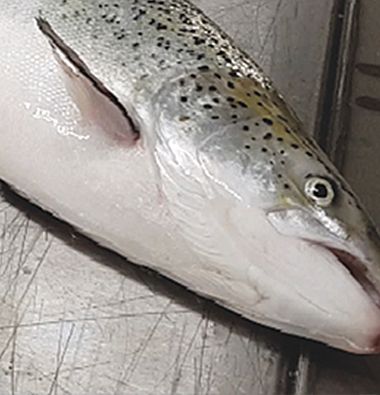Scottish farm trials validate biomass technology
30 June 2022

Ace Aquatec’s ground-breaking biomass measuring technology has achieved more than 99 per cent accuracy in recent trials on the west coast of Scotland. The underwater A-BIOMASS® camera, which uses stereoscopic imaging combined with advanced machine learning and image processing, will provide fish farmers with precise readings on the weight of their fish.
Traditional biomass estimation that is based on calculations and manual sampling is often inaccurate, leading to higher production costs as well as increased fish handling. But Ace Aquatec’s system, in development for more than ten years, not only provides a vital guide to harvesting decisions, but also has the potential to help prevent feed wastage and even become an early indicator of disease and sea lice levels.
‘At the moment, we have stereoscopic cameras that use triangulation to capture four points on the fish – the nose, the tail and the dorsal and pelvic fins,’ said Donald Sutherland, Ace Aquatec’s Head of Digital R&D. ‘We use those four points to measure the length and the height of the fish and then use algorithms to calculate the mass. Extensive trails with clients in Scotland enabled us to validate accuracy across different weight classes which is very important’.
In the trial, conducted by a leading Scottish salmon farmer, two cameras were deployed in a pen at different depths to gauge the average weights of the fish, which were then compared to actual weights of the fish at harvest. The results confirmed that the estimated average weight was very close to the true weight.
As well as looking at the accuracy of the data retrieved when compared to any true weights obtained from the site, the trial also tested the robustness of the camera hardware and of the connections and the surrounding software, the impact of weather, tides and different times of day, and other logistical issues.
Work is now continuing on artificial intelligence (AI) techniques that will train the camera to detect more details in the fish. Since the beginning of this year, Ace Aquatec’s in-house Data Scientist, Dr Arif Reza Anwary, has been developing the code of the biomass camera to add more facilities and make it even more accurate and user friendly.
‘Instead of capturing data on video, processing it and sending it to the cloud, all the information will be presented live on the screen,’ he said. ‘Then, in the next version of this project, we’ll not only capture the key points of the fish, we’ll identify the body shape and get a 3D view of the fish. So, we’ll be able to monitor individual fish and see if there is any disease or not.’
First, though, the A-BIOMASS® camera will undergo ‘ground truth’ trials in a controlled environment to further validate that the data received is an accurate representation of the fish in the cage. Once this is complete, Ace Aquatec will conduct additional site trials to test the robustness of the equipment.
One of the first companies to pilot the system, Scottish trout farmer Kames, is excited about its scope for improving fish health and welfare.
‘Many trout fail to adapt to transfer to sea, which leads to poor welfare,’ said Kames fish health expert Dr Andre Van.
‘Understanding the anticipated weights and full distribution of fish in the cage using A-BIOMASS® camera should allow earlier detection of problems and reduce handling during manual sampling.’
For Ace Aquatec, this is the first step of the journey. Accurate A.I. measurements consistently above 99% accuracy opens the door to being able to provide faster data to farmers with fewer systems required on site. This will radically transform the way biomass estimation is currently conducted. Furthermore, the algorithms that identify fish, can be e trained to detect disease, wounds, lice and other features of interest in the next phase of development. These are all input into our state of the art portal providing farmers with the insights they need to make strategic decisions that will save them time and money.


